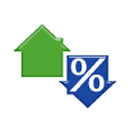Banks and Mortgage Lenders Consider Risk of Borrowers as Inflation Increases

Inflation figures for January will be released this coming week and economists are not expecting anything less than 4 per cent for the first month of the year. In December the rate was at 3.7 per cent which is almost double of the target goal of 2 per cent set by government. Should there be data that reveals something above 4 per cent, forecasters will not likely be surprised but the talk will resume of a soon to be interest rate increase to keep inflation in control. This will cause banks and other mortgage lenders to consider the risk of borrowers ability to payback loans with each increase in the cost of living and likely to make lending tighter.
The inflation rate is the likely trigger to see the rate increased. How much the inflation rate will have to rise before regulators give the go for a rate increase is unknown. For while the rate increase will help in keeping the inflation rate in check it is also what could cause a backward step in the recovery of the economy. Many economists have expressed the necessity in being patient when considering an increase in the interest rate which would take cheap borrowing away from needy businesses and consumers. The inflation rate is expected to be higher than in December due to the VAT increase, the higher cost of food prices and the soaring oil costs due to the uprising in Egypt in the last few weeks. The government uses the Consumer Price Index (CPI) as a measure of inflation but it does not include the struggling housing market data. The Retail Prices Index which does include housing market data will be much higher than the CPI. It will likely be very close to 5 per cent. Since it does include house prices it is seen as a much better reflection on the cost of living increase. Those seeking a mortgage or remortgage have been urged to secure a rate soon as the best offers are disappearing. Already the average on fixed rates has increased recently and should the Bank increase the rate it will indeed cost borrowers more than it would now. Even if the rate remains unchanged another month, the likely hood of lenders leaving rates unchanged lessens as inflation increases.



